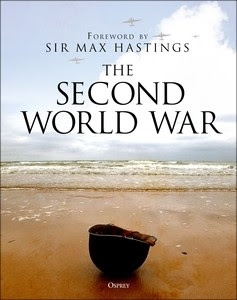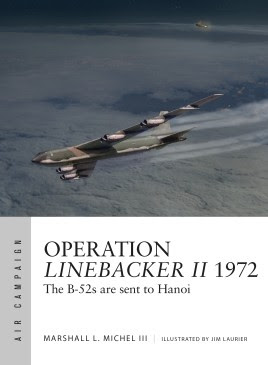Order Today
Otto Skorzeny
SS-Obersturmbannführer Otto Skorzeny became a legend in his own time. ‘Hitler's favourite commando' acquired a reputation as a man of daring, renowned for his audacious 1943 mission to extricate Mussolini from a mountain-top prison. Skorzeny's influence on special operations doctrine was far-reaching and long-lasting - in 2011, when US Navy SEALs infiltrated Pakistan to eliminate Osama Bin Laden, the operational planning was influenced by Skorzeny's legacy. Yet he was also an egoist who stole other men's credit (including for the seminal rescue of Mussolini), brave and resourceful but also an unrepentant Nazi and a self-aggrandizing hogger of the limelight.
Stuart Smith draws on years of in-depth research to uncover the truth about Skorzeny's career and complex personality. From his background as a student radical in Vienna, to his bloody service with the Waffen-SS on the Eastern Front, his surprise rebirth as a commando, and his intriguing post-war career and mysterious fortune, this book tells Otto Skorzeny's story in full - warts and all - for the first time.
Day of the Rangers
On October 3, 1993, Task Force Ranger was dispatched to seize two high-profile lieutenants of a Somali warlord. Special Forces troops were transported by ground vehicles and helicopters, and the mission was meant to be over within the hour. They quickly found themselves under heavy fire, and two Black Hawk helicopters were shot down. With a hastily organized relief column many hours away, the American troops faced a desperate battle for survival.
Focusing on the stories of the soldiers on the ground, and in the air, Day of the Rangers reveals the experiences and recollections of the Special Forces units, including the Rangers, Delta operators and Nightstalker crews who fought in the battle of Mogadishu.
Published to mark the battle's 25th anniversary and using recently declassified documents and new interviews with many of the participants, Day of the Rangers is a fascinating and revealing new history of a battle that would influence American Special Forces for decades to come.
The Battleship Bismarck
The Bismarck is perhaps the most famous - and notorious - warship ever built. Completed in 1941, the 45,000-ton German battleship sunk HMS Hood, the pride of the British Navy, during one of the most sensational encounters in naval history. Following the sinking, Bismarck was chased around the North Atlantic by many units of the Royal Navy. She was finally dispatched with gunfire and torpedoes on 27 May, less than five months after her completion. Her wreck still lies where she sank, 4,800m down and 960km off the west coast of France.
Drawing on new research and technology, this edition is the most comprehensive examination of Bismarck ever published. It includes a complete set of detailed line drawings with fully descriptive keys and full-colour 3D artwork, supported by technical details, photographs and text on the building of the ship and a record of the ship's service history.
Forts
Ever since humans began to live together in settlements they have felt the need to organise some kind of defence against potentially hostile neighbours. Many of the earliest city states were built as walled towns, and during the medieval era, stone castles were built both as symbols of the defenders' strength and as protection against potential attack. The advent of cannon prompted fortifications to become lower, denser and more complex, and the forts of the eighteenth and nineteenth centuries could appear like snowflakes in their complexity and beautiful geometry. Without forts, the history of America could have taken a very different course, pirates could have sailed the seas unchecked, and Britain itself could have been successfully invaded.
This book explains the history of human fortifications, and is beautifully illustrated using photographs, plans, drawings and maps to explain why they were built, their various functions and their immense historical legacy in laying the foundations of empire.
The Second World War
The period from 1939 to 1945 saw some of the most devastating and remarkable events in living memory. Labouring beneath a daily burden of fear, sacrifice, deprivation and uncertainty, soldiers and civilians of all nationalities were driven to extremes of selfless loyalty, dogged determination or bitter cruelty by the demands of a world at war.
This book tells the stories of the men and women who lived and died during the Second World War, from politicians to factory workers, and from High Command to the conscripted men on the front lines. The experience of war is brought to life through a wealth of contemporary documentation, private writings and historical research, whilst the political, military and historical significance of the war is assessed and examined.
From Europe's Western and Eastern Fronts to the war at sea, and from the Pacific to the Mediterranean and North Africa, every fighting front of the Second World War is covered in this truly comprehensive volume.
British Ironclads 1860–75
In November 1859, the French warship La Gloire was launched. She was the world's first seagoing ironclad - a warship built from wood, but whose hull was clad in a protective layer of iron plate. Britain, not to be outdone, launched her own ironclad the following year - HMS Warrior - which, when she entered service, became the most powerful warship in the world.
Just like the Dreadnought half a century later, this ship changed the nature of naval warfare forever, and sparked a frantic arms race. The elegant but powerful Warrior embodied the technological advances of the early Victorian era, and the spirit of this new age of steam, iron and firepower.
Fully illustrated with detailed cutaway artwork, this book covers the British ironclad from its inception and emergence in 1860, to 1875, a watershed year, which saw the building of a new generation of recognisably modern turreted battleships.
French Foreign Légionnaire vs Viet Minh Insurgent
The French Indochina War (1946-54) was the largest of the first generation of post-World War II wars of decolonization as Vietminh insurgents sought to topple their French colonial masters. It was also unique in that the insurgency evolved from low-level guerrilla activity to mobile operations by a large conventional army which finally defeated a large European-led expeditionary force, supported by artillery, armour and airpower. The war's progress was almost entirely dictated by the extreme terrain, and by the Chinese support enjoyed by the Vietnamese insurgents. The actions explored in this study cover three contrasting phases of the war in Tonkin during 1948-52, setting both sides on the path that would lead to the conflict's climactic encounter at Dien Bien Phu in 1954.
Featuring specially commissioned artwork and drawing upon a range of sources, this meticulously researched study casts new light on the troops who fought on both sides in this evolving and momentous conflict.
The Etruscans
Ancient Rome had deep roots in the 'Villanovan' culture that we call today the Etruscans. Their long-lived civilization can be traced to 900-750 BC in north-west Italy. They were a sea-faring people trading with and competing against Greek and Phoenician peoples, including the Carthaginians. They were also a great land-based power, especially in the 'Classical' period, where they expanded their power north into the Po Valley and south to Latium. In the 6th century BC an Etruscan dynasty ruled Rome, and their power extended southwards to the Amalfi coast. In 509 BC the Romans rose up to expel their kings, which began the long 'Etruscan twilight' when their power was squeezed by the Samnites and, most especially, the Romans.
Drawing on archaeological evidence including warrior tombs, paintings, sculptures, and fully illustrated throughout, this study examines one of the early rivals to Ancient Rome.
Operation Linebacker II 1972
After the failed April 1972 invasion of South Vietnam and the heavy US tactical bombing raids in the Hanoi area, the North Vietnamese agreed to return to the Paris peace talks, yet very quickly these negotiations stalled.
In an attempt to end the war quickly and 'persuade' the North Vietnamese to return to the negotiating table, President Nixon ordered the Air Force to send the US' ultimate conventional weapon, the B-52 bomber, against their capital, Hanoi. Bristling with the latest Soviet air defence missiles, it was the most heavily defended target in Vietnam. Taking place in late December, this campaign was soon dubbed the ‘Christmas Bombings'.
Using specially commissioned artwork and maps, ex-USAF fighter colonel Marshall Michel describes Linebacker II, the climax of the air war over Vietnam, and history's only example of how America's best Cold War bombers performed against contemporary Soviet air defences.
The Luger
Patented in 1898 and produced from 1900, Georg Luger's iconic semi-automatic pistol became synonymous with Germany's armed forces throughout both world wars.
Initially chambered for the 7.65×21mm round, from 1902 the Luger was designed for DWM's 9×19mm round, which even today remains the most popular military handgun cartridge. It was adopted by the Imperial German Navy in 1904, followed by the German Army in 1908, receiving the name Pistole 08. Despite being supplanted by the Walther P38, the Luger remained in widespread service with all arms of Nazi Germany's armed forces throughout World War II, and even equipped East Germany's Volkpolizei in the years after 1945.
Featuring full-colour artwork, expert analysis and archive and present-day photographs, this engaging study tells the story of the Luger, the distinctive and deadly semi-automatic pistol that has come to symbolize Germany's armed forces in the 20th century.
The Splintered Empires
At the beginning of 1917, the three empires fighting on the Eastern Front were reaching their breaking points, but none was closer than Russia. After the February Revolution, Russia's ability to wage war faltered and her last desperate gamble, the Kerensky Offensive, saw the final collapse of her army. This helped trigger the Bolshevik Revolution and a crippling peace, but the Central Powers had no opportunity to exploit their gains and, a year later, both the German and Austro-Hungarian empires surrendered and disintegrated.
Concluding his acclaimed series on the Eastern Front in World War I, Prit Buttar comprehensively details not only these climactic events, but also the ‘successor wars' that raged long after the armistice of 1918. New states rose from the ashes of empire, and war raged as German forces sought to keep them under the aegis of the Fatherland. These unresolved tensions between the former Great Powers and the new states would ultimately lead to the rise of Hitler and a new, terrible world war only two decades later.
Osprey Publishing Ltd











No comments:
Post a Comment